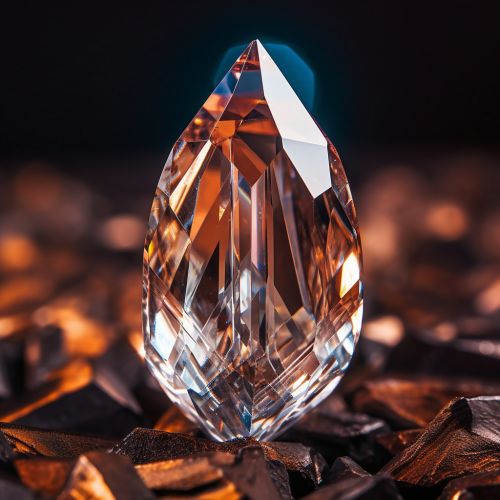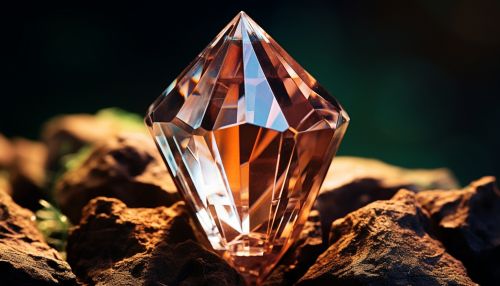Zircon
Overview
Zircon is a mineral belonging to the group of Nesosilicates. Its chemical name is zirconium silicate, and its corresponding chemical formula is ZrSiO4. A common empirical formula showing some of the range of substitution in zircon is (Zr1–y, REEy)(SiO4)1–x(OH)4x–y. Zircon forms in silicate melts with large proportions of high field strength incompatible elements. For example, hafnium is almost always present in quantities ranging from 1 to 4%. The crystal structure of zircon is tetragonal crystal system. The natural color of zircon varies between colorless, yellow-golden, red, brown, blue, and green.
Physical and Chemical Properties
Zircon is extremely resistant to heat and corrosion. This durability, combined with its resistance to wear, makes it an ideal choice for use in various industrial applications. Zircon is also one of the densest gemstones, which means it will be heavier than other gemstones of the same size. It also has a very high refractive index, which means it can produce brilliant gemstones with a luster that can even outshine a diamond.
Zircon is insoluble in acids and alkalis. It is not affected by the weather and can be found in all types of rocks. It is also resistant to the effects of heat and pressure, which makes it one of the few minerals that can survive in conditions found in the Earth's mantle.
Occurrence and Production
Zircon is found in many parts of the world, including Australia, Brazil, Cambodia, Canada, India, Madagascar, Mozambique, Nigeria, Sri Lanka, Tanzania, and the United States. It is typically found in heavy mineral sands, where it is mined for its use in various industrial applications.
The production of zircon involves several stages. First, the heavy mineral sands are mined, usually using open-pit mining techniques. The ore is then processed to remove the heavy minerals, which are then separated using gravity and magnetic separation techniques. The zircon is then further processed to remove impurities and to produce a product that is suitable for industrial use.
Uses
Zircon is used in a wide range of applications. Its high heat resistance makes it ideal for use in refractories, foundries, and in the manufacture of ceramics. It is also used in the production of nuclear reactors due to its low absorption cross-section for thermal neutrons.
In addition, zircon is used in the jewelry industry as a gemstone. It is often used as a substitute for diamond, due to its high refractive index and luster. However, it is not as hard as diamond and can be scratched more easily.
Health and Environmental Impact
While zircon is generally considered to be safe, it can pose health risks if it is not handled properly. Inhalation of zircon dust can cause lung inflammation and fibrosis. Long-term exposure can lead to silicosis, a lung disease that can be fatal.
Zircon mining can also have an environmental impact. The mining process can lead to the release of harmful substances into the environment, including radioactive elements such as uranium and thorium. In addition, the mining process can lead to soil erosion and the destruction of habitats.
See Also


